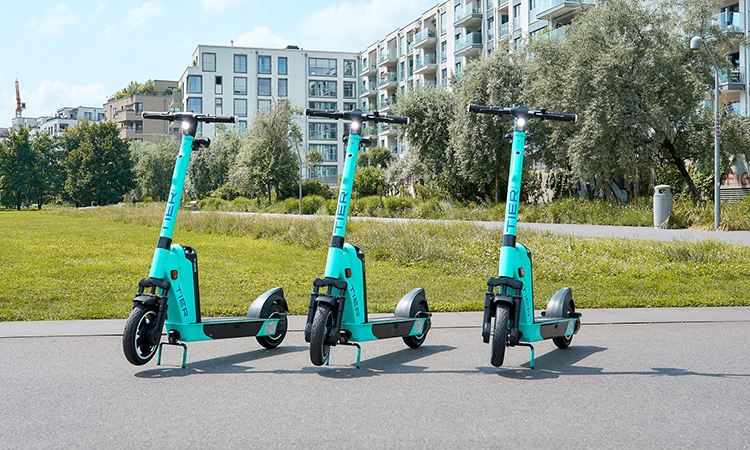Leading the industry in safety and compliance: TIER Mobility’s new e-scooter ‘brain’
- Like
- Digg
- Del
- Tumblr
- VKontakte
- Buffer
- Love This
- Odnoklassniki
- Meneame
- Blogger
- Amazon
- Yahoo Mail
- Gmail
- AOL
- Newsvine
- HackerNews
- Evernote
- MySpace
- Mail.ru
- Viadeo
- Line
- Comments
- Yummly
- SMS
- Viber
- Telegram
- Subscribe
- Skype
- Facebook Messenger
- Kakao
- LiveJournal
- Yammer
- Edgar
- Fintel
- Mix
- Instapaper
- Copy Link
Posted: 15 August 2022 | Eryk Sokolowski - TIER Mobility | No comments yet
Eryk Sokolowski, Head of Vehicle and IoT Programs at TIER Mobility, discusses the operator’s new e-scooter ‘brain’, which has been designed to deliver improved vehicle positioning, geo-fencing and connectivity as part of the operator’s effort to enhance vehicle and rider safety.


Credit: TIER Mobility
At TIER Mobility, we’re proud to be at the forefront of transport innovation as we work towards our mission of transforming the way that people move around towns and cities.
As part of that mission is to incentivise a fundamental change in travel habits, we’re always looking for ways to improve the rider experience, and to support the highest levels of safety and sustainability within the markets in which we operate around the world. Staying at the cutting edge of new technologies and ideas is crucial to delivering on that aim.
Developing an upgraded e-scooter ‘brain’
The new features of our e-scooter brains include sensors, stronger processing power and 4G capability”
We are thrilled that, after months of hard work, 60 e-scooters have been deployed in London with an upgraded e-scooter ‘brain’. This technology has been developed in-house by TIER to deliver improved vehicle positioning, geo-fencing and connectivity.
The new features of our e-scooter brains include sensors, stronger processing power and 4G capability. This technology, dubbed ‘Parrot’, will be trialled first in London, with further trials taking place in Norway and France in the coming months.
It admittedly all sounds rather technical – so, what does it actually mean for riders?
Ensuring safe e-scooter use
Our main goal when developing this technology was to increase vehicle positioning and parking accuracy, and to tackle issues like drunk or unsafe riding.
The new brains do that in a few ways. Firstly, the technology reduces vehicle reaction times to geo-fenced zones and makes them more precise. This means that vehicles are not only more responsive to the invisible barriers that exist where they should not be used or parked, with less of a lag, but they will also not falsely trigger when you are riding on the edge of a zone.
Our main goal when developing this technology was to increase vehicle positioning and parking accuracy, and to tackle issues like drunk or unsafe riding”
Higher accuracy will enable a much smoother parking experience for the rider. It will also help to protect vulnerable road users, including visually impaired people, by addressing challenges such as irresponsible sidewalk or pavement riding and stopping vehicles from parking in no-go areas.
This is just the latest in our efforts to ensure that we are leading the way in parking accuracy, and follows our acquisition earlier in 2022 of Fantasmo, a U.S.-based technology company. Fantasmo has already earned a world-class reputation with its Camera Positioning System – a new positioning technology that is 10 times more accurate than GPS and can validate e-scooter parking within 20cm or less.
Utilising ride data to improve operational efficiency
We are also introducing EDGE processing to our e-scooters as part of this trial, which enables vast amounts of information and data about rides to be analysed on each individual vehicle. EDGE processing is a type of computing that means that data can be processed at the source, rather than remotely in the cloud, reducing both our response times and our bills, because we don’t have to transmit as much data over a mobile connection.
Being able to have access to data from all of the sensors on the scooter will allow us to predictively detect maintenance issues”
Being able to have access to data from all of the sensors on the scooter will allow us to predictively detect maintenance issues; for example, when an individual e-scooter has a faulty tyre or another similar issue, so that we can get it fixed before a customer rides that e-scooter again.
We can also use the improved definition of vehicle data to tackle drunk riding by analysing rider behaviour, using Machine Learning and Artificial Intelligence (AI) algorithms to eventually recognise the likelihood of unsafe rider behaviours. That means that we will be able to identify any problem areas, and take steps to reduce the behaviour from occurring.
Another key benefit of introducing this platform is that we can react quickly to changing regulatory environments and requests from local authorities”
Taken together, both of these developments will ultimately lead to safer journeys for both riders and other road users.
Another key benefit of introducing this platform is that we can react quickly to changing regulatory environments and requests from local authorities, as we can build, deploy and update our own EDGE applications, so that our vehicles can evolve with the market.
Trialling the new technology in London
‘Parrot’ is just the latest example of our work to innovate to make micro-mobility more compliant and safer for all road users”
The trial will collect data from across Europe ahead of a full roll-out in 2023, and the new technology will eventually be fitted to TIER’s entire existing e-scooter fleet, extending the life of our vehicles and improving the rider experience in every country and city in which we can be found.
‘Parrot’ is just the latest example of our work to innovate to make micro-mobility more compliant and safer for all road users.
We’re committed to setting the bar high for safety in the micro-mobility industry, and we’ll keep pioneering in this space until we achieve our goal: mass adoption of safe, sustainable transport to bring down emissions and transform our cities.


Eryk holds two Master’s degrees from Bath University and has worked in the Automotive, Consumer Electronics and Wearables industries at firms like Jaguar-Land Rover and McLaren Technologies.
Since his move to the micro-mobility industry, he has developed electronics systems for everything from electric unicycles to e-scooters and e-bikes. Now, at TIER, his proudest achievement is seeing the public using a vehicle he has worked on.
Related topics
Artificial Intelligence, IoT (Internet of Things), Mobility Services, Passenger Experience, Sustainable Urban Transport, Vehicle & Passenger Safety
Related modes
Bikes & Scooters
Related cities
London
Related countries
France, Norway, United Kingdom
Related organisations
TIER Mobility
Related people
Eryk Sokolowski








